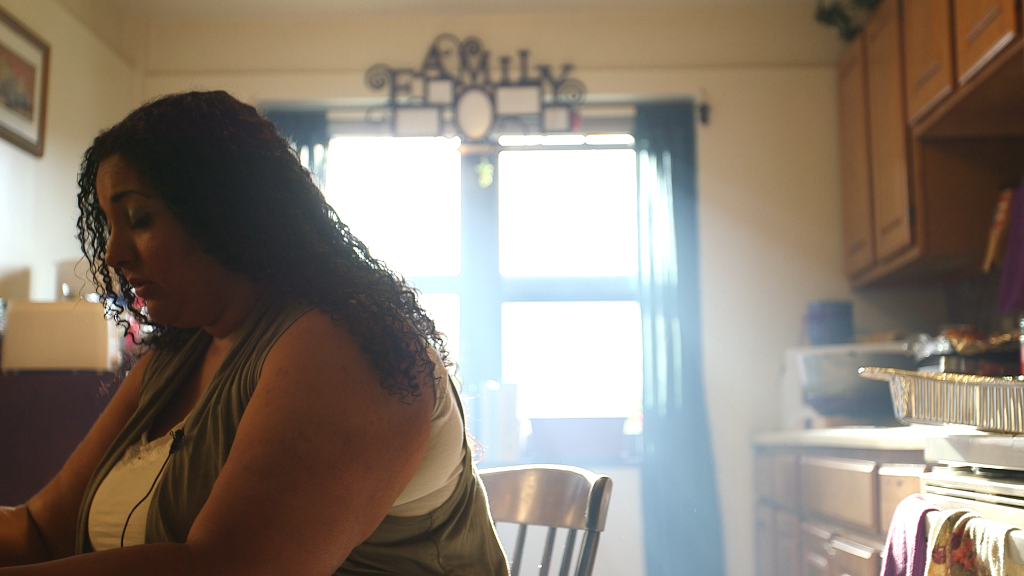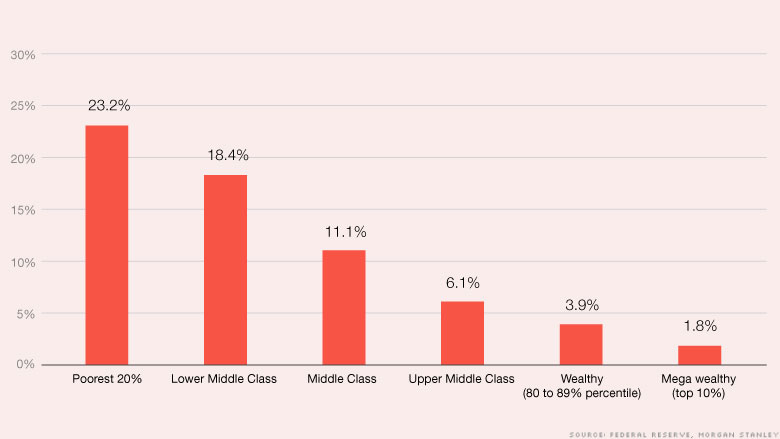
It's that time of year when Americans are encouraged to spend big on others and on themselves.
But here's the catch: a lot of America still is massively in debt, especially in the lower rungs of the income ladder. Wealthy families have been able to pay off a lot of their debt in recent years, but poorer families have not.
The situation is so bad that Morgan Stanley (MS) says the middle class is "eroding." Too many people have high debt burdens.
It's a trap they just can't get out of. Wages aren't growing for those at the bottom, making it hard to pay off debt.
Related: The cheapest gas in America is in...
Two Americas: high-end and low-end
Inequality has become a big issue on the presidential campaign trail. But Morgan Stanley also sees it playing out in the business world. The middle income consumer is disappearing. Retailers must respond by catering to the high and low end.
"Faced with stagnant wages, high debt and rising costs, the middle class is eroded," writes Morgan Stanley Research in a new report "Mind the Inequality Gap."
In Europe, the amount of debt people have increases as their income rises. The poor don't carry a huge debt load, the researchers found.
It's the exact opposite in the U.S. The lower middle class and poor came into the Great Recession with a lot of debt and they haven't been able to pay it down since.
About 1 in 5 American families who make $41,200 or less have what's considered a hefty debt burden -- defined as more than 40% debt-to-income load.
'Let them eat credit'

University of Chicago's former business school professor Raghuram Rajan has argued the problem arises from the fact that the poor are trying to keep up with the (far wealthier) Joneses. Since wages haven't risen much for the lower class, they have turned to debt to try to buy the electronics, cars and other items they think they need to be like everyone else.
Rajan, who is currently India's central bank governor, has dubbed the phenomenon "Let them eat credit," a modern day version of "let them eat cake," a phrase supposedly uttered by a French princess in the late 1700s when she heard the peasants didn't have any bread to eat.
There's a lot of debate among economists about whether Rajan is correct about how America's poor -- and even lower middle class -- accumulated so much debt. But most agree they still have a lot of it.
Related: Our sons' $189,000 student debt is delaying our retirement
The wealthy are paying down their debt
Since the recession, upper class Americans have been saving more and paying down their debt. Upper middle class and wealthy households have basically cut their debt in half. They don't want to be caught scraping by again. That's why U.S. household debt overall has been on the decline in recent years.
Financial responsibility appears to be back -- for the rich.
The national statistics mask the ongoing struggle of the poor and middle class. Even if they wanted to be more responsible, it's difficult to pay down debt when incomes aren't rising.
As the Federal Reserve noted in its latest survey of consumer finances: "Families at the bottom of the income distribution saw continued substantial declines in average real incomes between 2010 and 2013, continuing the trend observed between the 2007 and 2010 surveys."
Expect this holiday season to be a tale of two very different shoppers.


